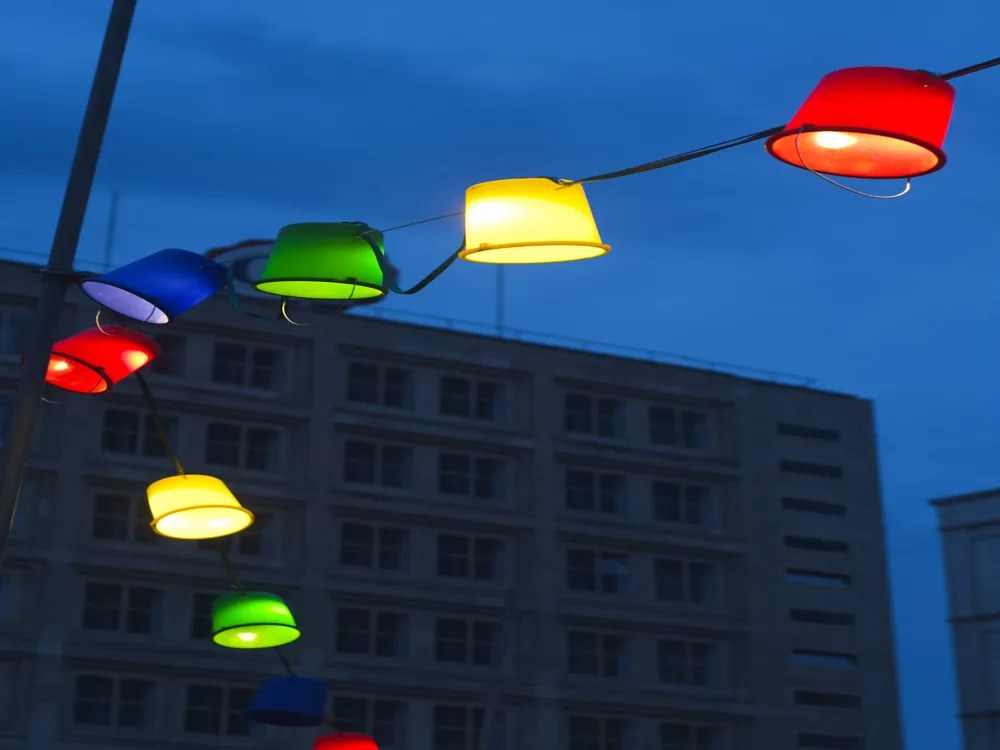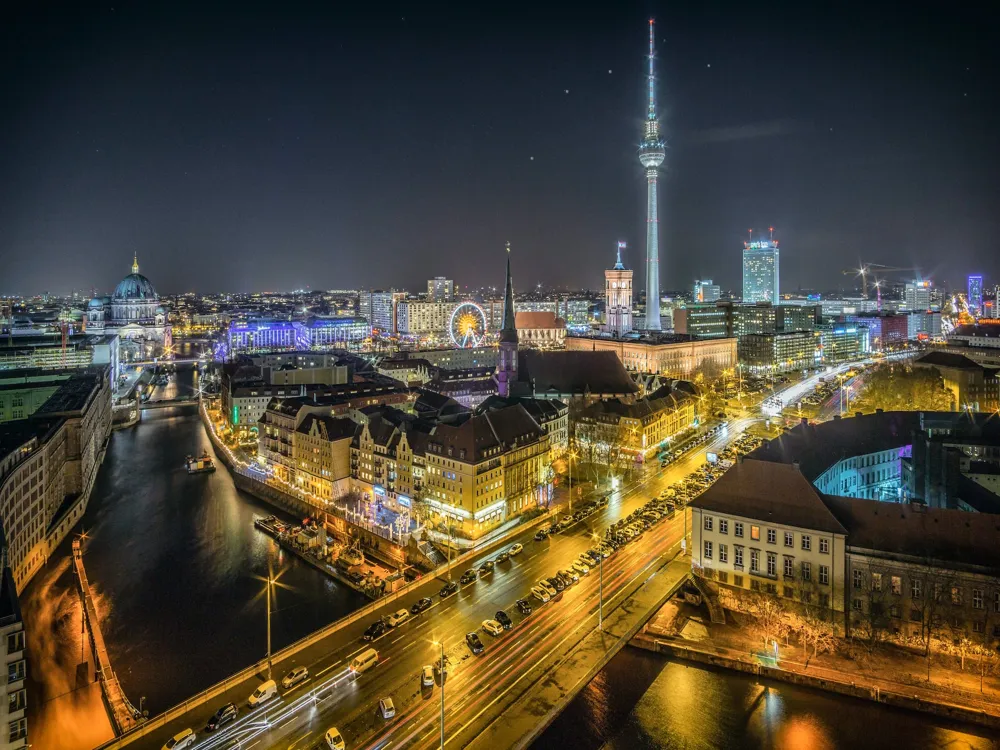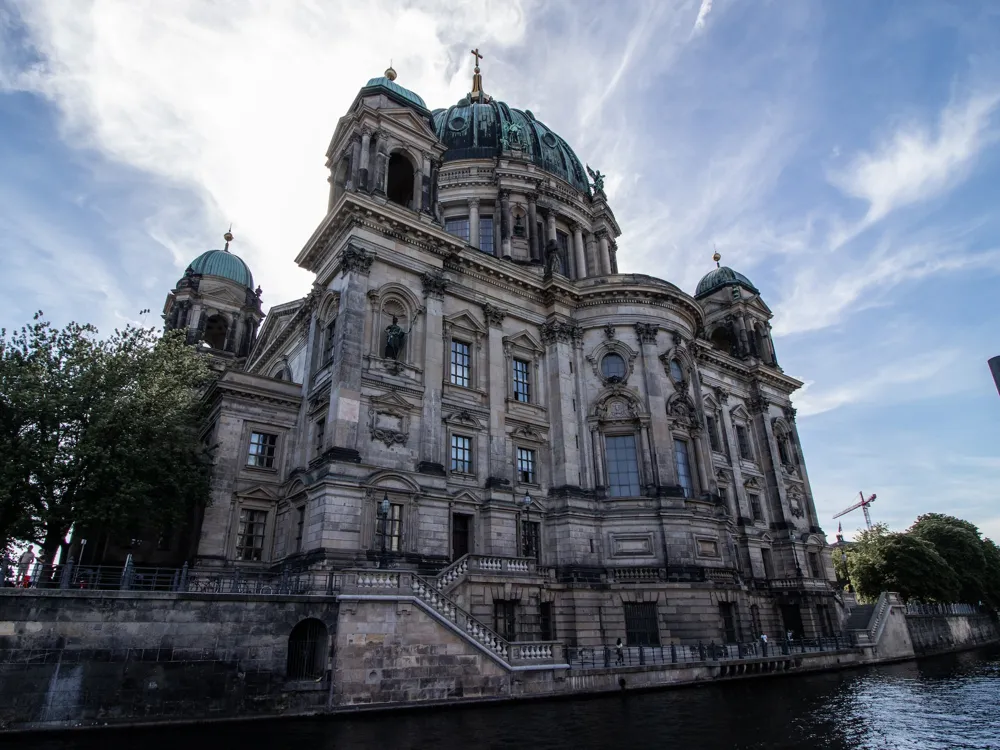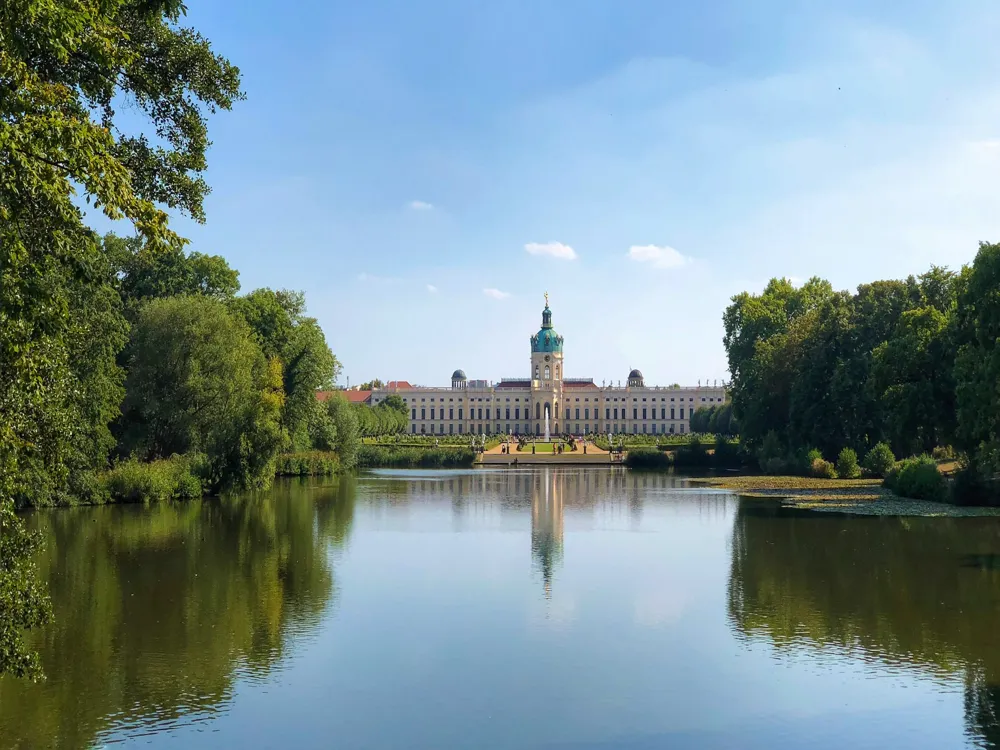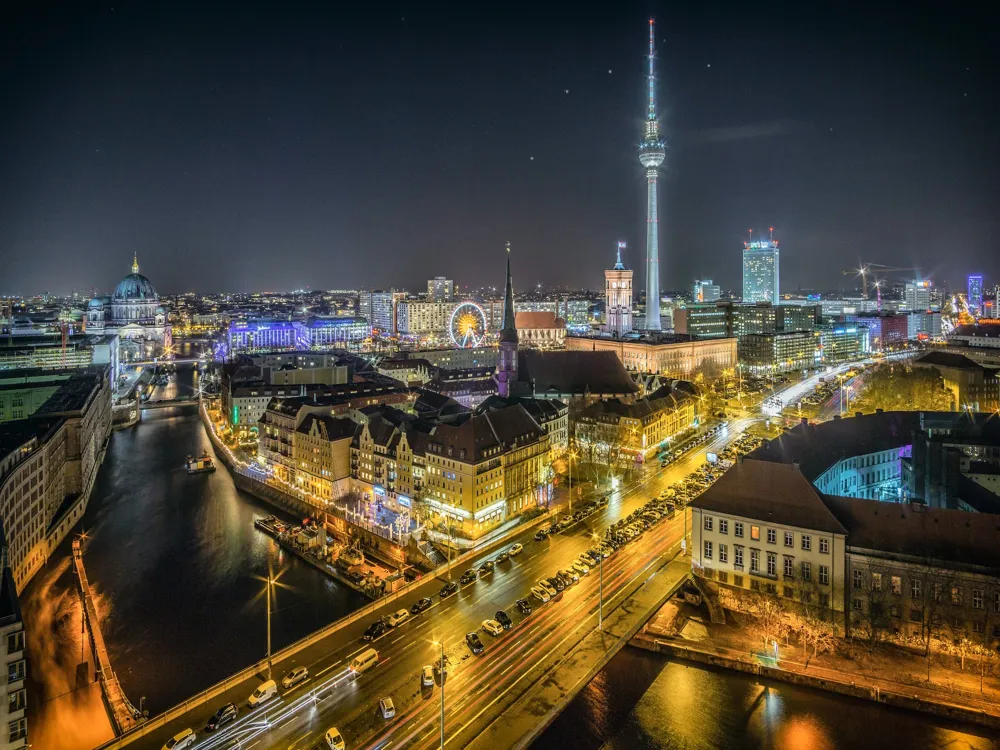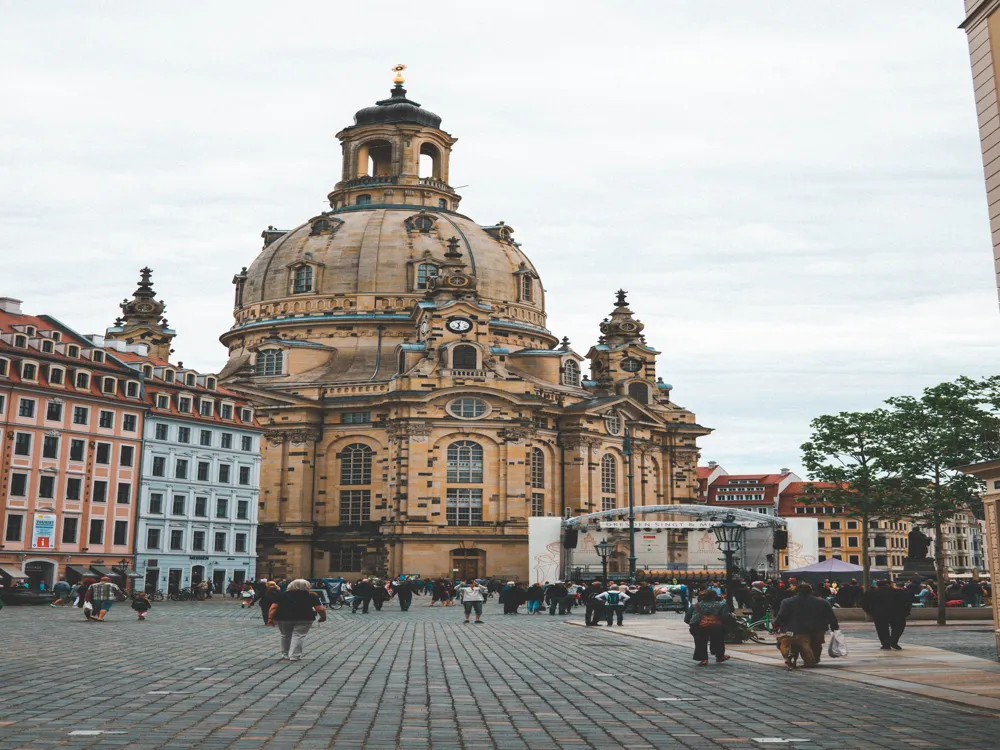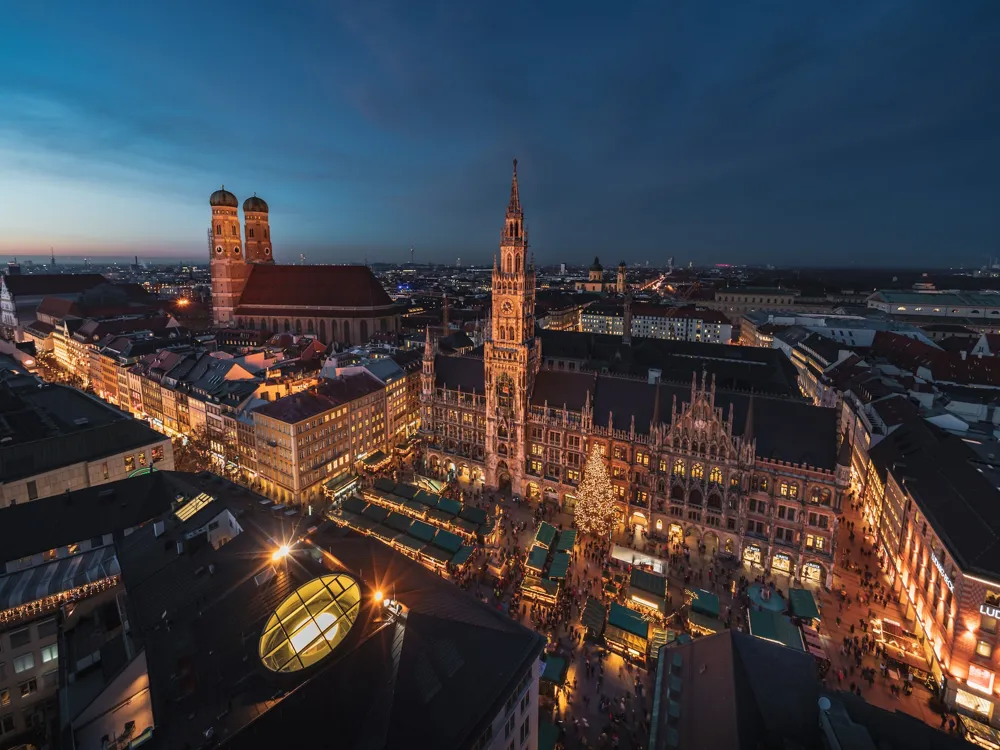Alexanderplatz, fondly referred to as 'Alex' by locals, stands as a testament to Berlin's rich history and cultural evolution. Located in the heart of the city, this public square has been a pivotal part of Berlin's social and political life for centuries. Originally designed as a cattle market in the 17th century, Alexanderplatz has transformed through the ages, echoing Berlin's dynamic history. During the 19th and early 20th centuries, Alexanderplatz witnessed rapid industrialization, becoming a bustling commercial hub. It was during this era that the square gained significant architectural and urban importance. The early 20th century saw Alexanderplatz turning into a transportation nexus, with the introduction of the U-Bahn station, which further elevated its status as a central meeting point in Berlin. The Second World War left Alexanderplatz heavily damaged, but the subsequent years brought about a remarkable transformation. The square was extensively rebuilt during the GDR era, with a clear emphasis on socialist urban design. This period introduced several iconic structures to Alexanderplatz, including the famous Fernsehturm (TV Tower), which has since become a symbol of the city. In the post-reunification era, Alexanderplatz continues to evolve. It has become a melting pot of different architectural styles, showcasing both its historic past and its aspirations for the future. Today, Alexanderplatz is not just a historical landmark but also a vibrant, modern space that reflects the spirit of contemporary Berlin. The square is surrounded by several notable buildings, including the World Time Clock, a popular meeting point, and the Park Inn Hotel, which offers stunning views of the city. The area is always bustling with activity, hosting various events, markets, and concerts throughout the year, making it a lively destination for both tourists and locals. Alexanderplatz's transformation over the years is a narrative of Berlin's resilience and adaptability. It remains a place where history, culture, and modernity converge, offering visitors a unique glimpse into the city's past and present. The architecture of Alexanderplatz is a rich tapestry that narrates Berlin's history through its buildings and structures. From its origins as a humble market square to its current status as a major urban hub, the architectural evolution of Alexanderplatz mirrors the city's tumultuous past and its continuous growth. Perhaps the most iconic symbol of Alexanderplatz is the Fernsehturm (TV Tower), constructed between 1965 and 1969. Standing at a height of 368 meters, it is the tallest structure in Germany and a classic example of GDR architecture. The tower's sleek, futuristic design was a powerful statement of the GDR's ambitions and technological prowess. Another significant architectural feature of Alexanderplatz is the World Time Clock, a rotating installation that shows the time in various cities around the world. Installed in 1969, this clock has become a focal point in the square and is a popular meeting spot. The surrounding buildings of Alexanderplatz also tell a story of architectural diversity. The Park Inn Hotel, a prime example of modernist architecture, offers a stark contrast to the historical buildings that once dominated the area. Its streamlined design and towering presence add a contemporary edge to the square. The Alexa Shopping Center, a more recent addition to the square, reflects the changing needs and aesthetics of the 21st century. Its colorful, undulating facade brings a touch of modernity and vibrancy to the area. Alexanderplatz's architecture is not just about individual buildings but also about the spatial design of the square. The wide, open spaces, designed for large gatherings and events, speak to the square's role as a public meeting place. The integration of various transportation modes, including the U-Bahn, S-Bahn, trams, and buses, highlights the square's function as a transit hub. This architectural diversity makes Alexanderplatz a unique urban space that reflects Berlin's history and its aspirations. The blend of historic and modern structures, set against the backdrop of a dynamic public square, creates an environment that is both awe-inspiring and welcoming. Alexanderplatz is a year-round destination, but the best time to visit is during spring or early autumn. The weather is pleasant, and the square is less crowded. Winter also has its charm, especially with the festive Christmas markets. Take a leisurely walk around the square to appreciate its architectural diversity. Don't miss the view from the top of the TV Tower. For shopping enthusiasts, Alexa Shopping Center offers a variety of stores and eateries. Sample local Berliner cuisine in the numerous restaurants around Alexanderplatz. From traditional German dishes to international cuisine, there's something to suit every palate. Check the local event calendar for any cultural events or festivals happening in Alexanderplatz. It's a great way to experience Berlin's vibrant cultural scene. While Alexanderplatz is generally safe, it's always wise to be cautious of your belongings, especially in crowded areas. Be mindful of the local traffic rules when crossing streets. Alexanderplatz is highly accessible via Berlin's extensive public transportation network. The U-Bahn (U2, U5, U8), S-Bahn (S5, S7, S75), trams, and buses all have stops at or near Alexanderplatz. For those coming from further away, regional trains also service the area. If you're arriving by car, there are several parking facilities nearby, though public transport is the recommended mode of travel due to the area's high traffic. Read More:Overview of Alexanderplatz in Berlin
Architecture of Alexanderplatz
Tips When Visiting Alexanderplatz
Best Times to Visit
Exploring the Area
Local Cuisine
Cultural Experiences
Safety Tips
How To Reach Alexanderplatz
Alexanderplatz
Berlin
₹ 58,000 onwards
View berlin Packages
Weather :
Tags : Neighborhood
Timings : Open 24/7
Entry Fee : No Entry Fee
Planning a Trip? Ask Your Question
Berlin Travel Packages
View All Packages For Berlin
Top Hotel Collections for Berlin

Private Pool

Luxury Hotels

5-Star Hotels

Pet Friendly
Top Hotels Near Berlin
Other Top Ranking Places In Berlin
View All Places To Visit In berlin
View berlin Packages
Weather :
Tags : Neighborhood
Timings : Open 24/7
Entry Fee : No Entry Fee
Planning a Trip? Ask Your Question
Berlin Travel Packages
View All Packages For Berlin
Top Hotel Collections for Berlin

Private Pool

Luxury Hotels

5-Star Hotels

Pet Friendly






